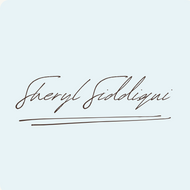Hi there, I’m Sheryl. As someone who has dealt with chronic health issues and depression for much of my life, I have found that creating art is not just a hobby—it is a vital practice that helps me connect with myself and reduce stress. Through the difficulties, art has been my constant companion, providing a sanctuary where I can express myself freely and find a sense of calm.
The Science Behind Art and Stress Reduction
Creating art has been shown to have significant positive effects on mental health, particularly in reducing cortisol levels—the body's primary stress hormone. A study published in the Journal of the American Art Therapy Association found that engaging in creative activities for as little as 45 minutes can significantly lower cortisol levels in the body (Kaimal, Ray, & Muniz, 2016). This reduction in cortisol can lead to a decrease in stress, anxiety, and even physical symptoms associated with chronic stress.
My Personal Journey
Living with chronic health issues and battling depression has been incredibly challenging. There were times when getting out of bed felt like an insurmountable task. But through it all, art has been my lifeline. I started incorporating art into my daily routine not as a task to complete but to connect with my emotions and reduce the overwhelming stress that often accompanies chronic illness.
Some days, my art practice involves working on a large canvas, while other days it might be as simple as doodling in my sketchbook at the kitchen table. The beauty of art is that it does not matter how “good” you are at it; the act of creating is what brings the benefits. I have found immense joy and relief in the process of making art, even on days when my energy is low, and my mood is down.
The Benefits of Creating Art
Stress Relief: Engaging in creative activities helps to divert the mind from stressors, allowing for a temporary escape and a chance to reset. The physical act of creating can be meditative and calming, helping to lower cortisol levels and reduce stress.
Emotional Expression: Art provides a non-verbal outlet for expressing emotions that might be difficult to articulate. Through colors, shapes, and textures, you can convey feelings and experiences that words might not capture.
Improved Mental Health: Regular art practice has been linked to improvements in mental health, including reductions in symptoms of depression and anxiety. The focus and mindfulness required in creating art can enhance overall well-being and mental clarity.
Enhanced Creativity: Engaging in artistic activities stimulates the brain, encouraging creative thinking and problem-solving. This can have a positive impact on other areas of life, fostering a more creative and adaptive mindset.
You Do not Have to Be a Professional
One of the biggest misconceptions about art is that you need to be “good” at it to benefit from it. This could not be further from the truth. The benefits of art are accessible to everyone, regardless of skill level. Whether you are painting, drawing, sculpting, or even crafting, the key is to focus on the process rather than the result.
For me, some of the most therapeutic art sessions have been those where I let go of expectations and simply allowed myself to create. It is in those moments of freedom and exploration that I have found the greatest sense of peace and connection.
Getting Started
If you are new to art or have not picked up a paintbrush in years, I encourage you to start small. Grab a sketchbook and some basic supplies—pencils, markers, watercolors—and just start creating. Remember, it is not about producing a masterpiece; it is about giving yourself the space to express and explore.
Set aside a few minutes each day to engage in your art practice. It could be in the morning before the day starts or in the evening to unwind. The important thing is to make it a regular part of your routine, allowing yourself to experience the full benefits over time.
Art has the power to heal, to reduce stress, and to connect us with our innermost selves. Through my own journey with chronic health issues and depression, I have discovered that art is more than just a creative outlet—it is a lifeline. By incorporating art into your daily routine, you too can experience the profound benefits it offers, no matter your skill level.
If you are feeling intimidated, my suggestion is to start with a small sketchbook. I personally love watercolor books, like the Canson XL Watercolor 7"x10" with 140 lb paper. This sketchbook can handle any medium, making it perfect for experimenting. Plus, the pages lie flat when you are working on them, which is a nice feature. Just make sure to let your work fully dry before closing the book. Starting small and manageable can help you ease into the creative process without feeling overwhelmed.
So, pick up those brushes, pencils, or whatever medium speaks to you, and start creating. Your mind and body will thank you.
References
Kaimal, G., Ray, K., & Muniz, J. (2016). Reduction of Cortisol Levels and Participants' Responses Following Art Making. Journal of the American Art Therapy Association, 33(2), 74-80.

